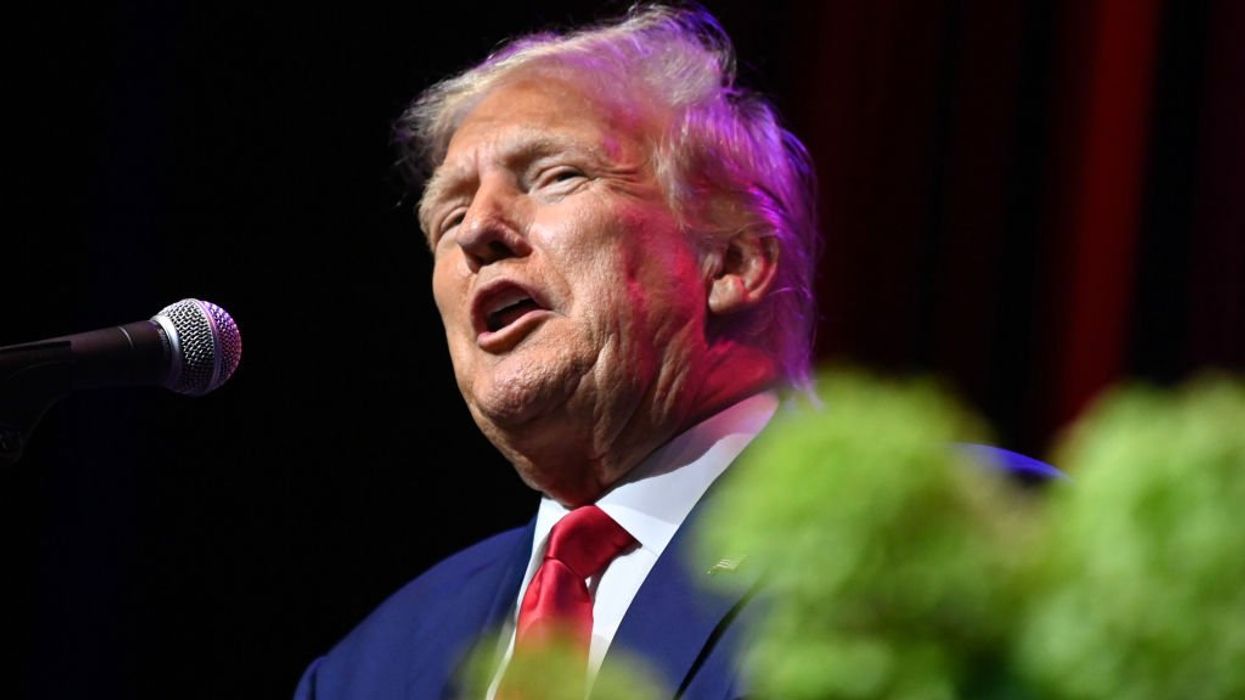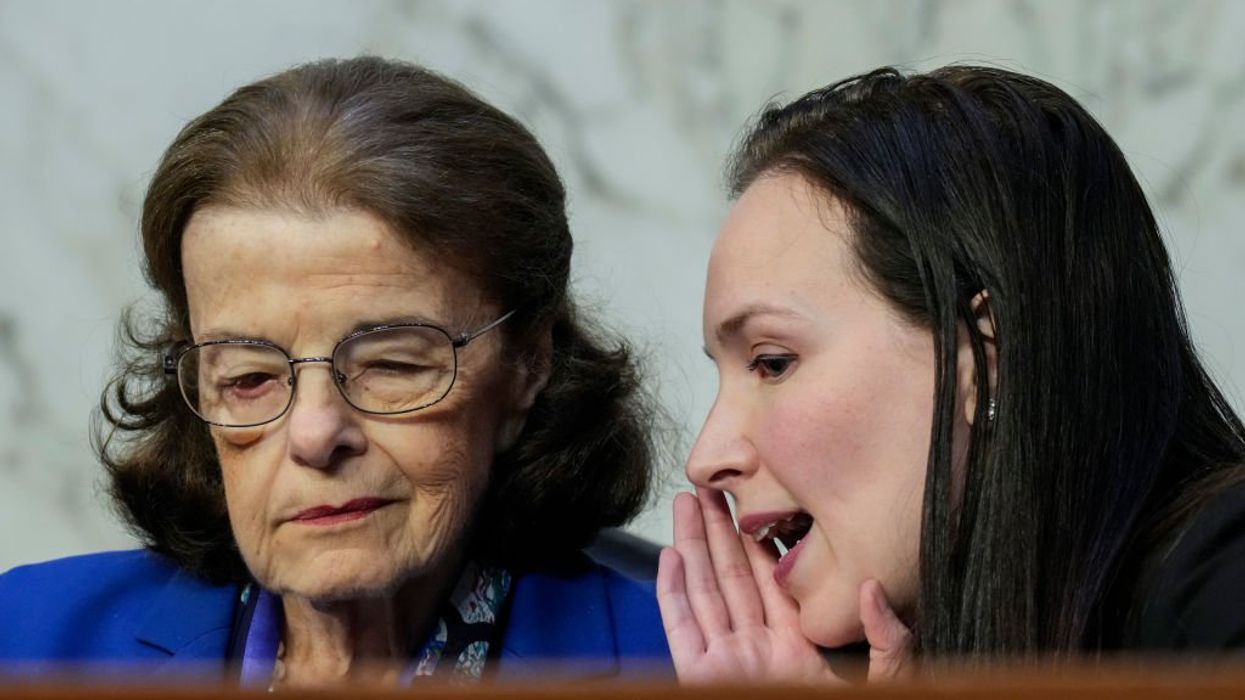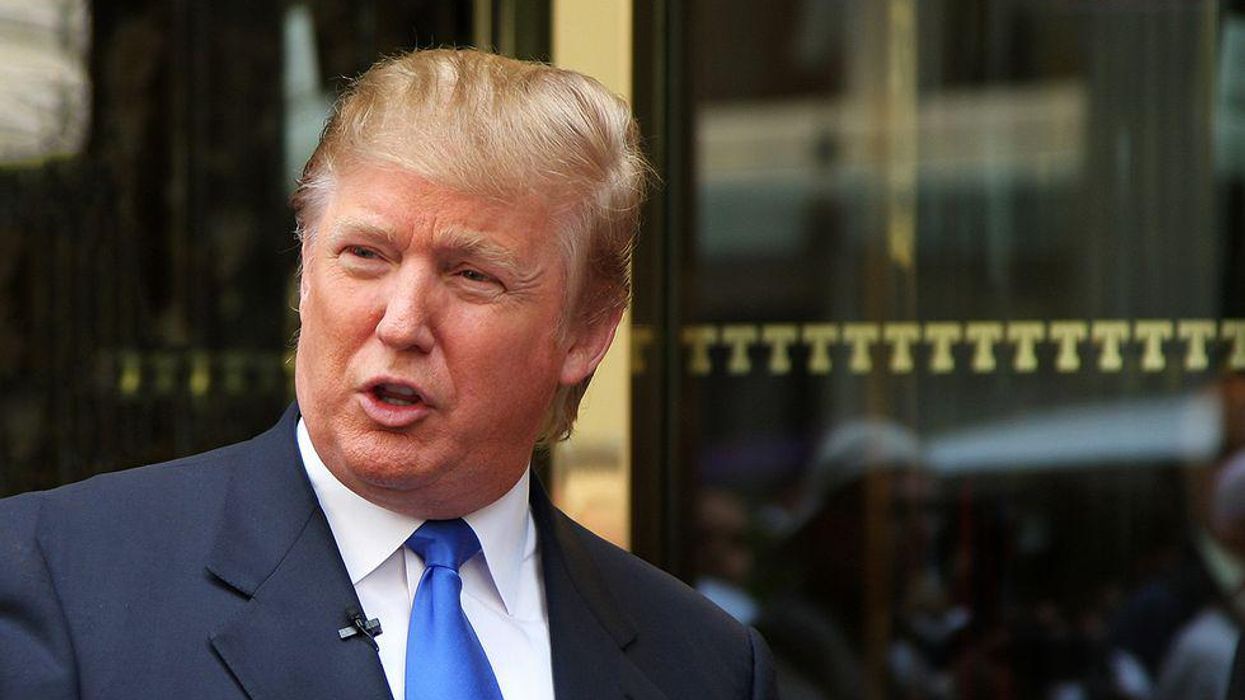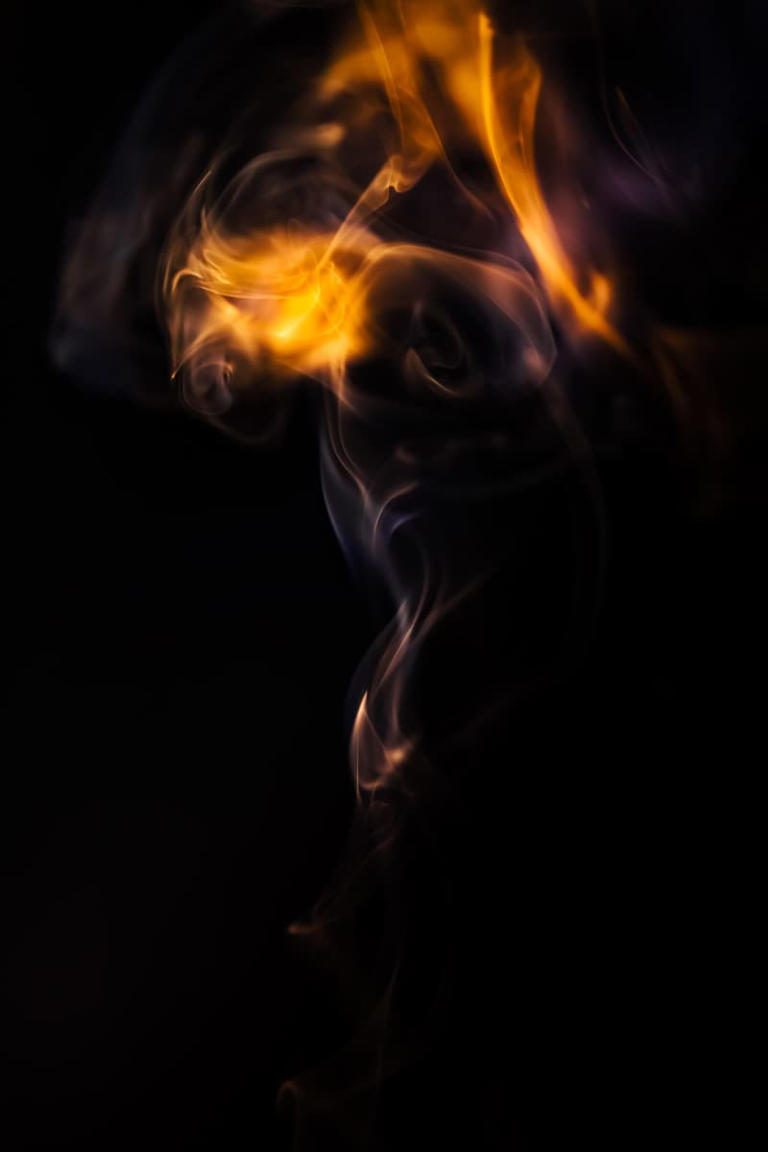
Former U.S. President Donald Trump speaks during the Alabama Republican Party’s 2023 Summer meeting at the Renaissance Montgomery Hotel on August 4, 2023 in Montgomery, Alabama. (Photo by Julie Bennett/Getty Images).
Thom Hartmann
September 08, 2023
Many Americans are baffled by the Republican Party’s embrace of billionaire sociopath Trump and elected Republicans’ willingness to overlook the death of seven Americans, including three police officers, in an attempted coup. (Particularly after they spent over 2 years and tens of millions of dollars obsessing on 4 dead Americans in Benghazi.)
They’re also wondering why Kevin McCarthy would reject Liz Cheney to embrace someone like Elise Stefanik, an apologist for the January 6 treason attempt, or go along with Mitch McConnell’s attempts to sabotage the American Rescue Plan, the American Jobs Plan, and the American Family Plan.
After all, people are hurting. We just experienced the worst pandemic in a century, and, under Trump and Bush before him, two economic downturns unmatched since the Republican Great Depression of the 1920s.
Why, Americans wonder, would the GOP embrace such anti-American and nakedly brutal politics and policies?
Why would they try so hard to destroy Medicare and Social Security? Why would they mourn the loss of Trump’s program to tear children from their families and throw them into cages? Why are they so enthusiastic about efforts to make it harder to vote that Ron DeSantis would delight in parading 15 Black voters before the cameras in chains?
Many Americans are baffled by the Republican Party’s embrace of billionaire sociopath Trump and elected Republicans’ willingness to overlook the death of seven Americans, including three police officers, in an attempted coup. (Particularly after they spent over 2 years and tens of millions of dollars obsessing on 4 dead Americans in Benghazi.)
They’re also wondering why Kevin McCarthy would reject Liz Cheney to embrace someone like Elise Stefanik, an apologist for the January 6 treason attempt, or go along with Mitch McConnell’s attempts to sabotage the American Rescue Plan, the American Jobs Plan, and the American Family Plan.
After all, people are hurting. We just experienced the worst pandemic in a century, and, under Trump and Bush before him, two economic downturns unmatched since the Republican Great Depression of the 1920s.
Why, Americans wonder, would the GOP embrace such anti-American and nakedly brutal politics and policies?
Why would they try so hard to destroy Medicare and Social Security? Why would they mourn the loss of Trump’s program to tear children from their families and throw them into cages? Why are they so enthusiastic about efforts to make it harder to vote that Ron DeSantis would delight in parading 15 Black voters before the cameras in chains?
Why did they continue to support Trump after he lost the House, Senate, and White House and continues to rant his racist, anti-American, anti-democratic strongman rhetoric?
But, it turns out, it’s not just all about politics; the roots of this brutal movement in today’s GOP run from a 1927 child murderer, through a real-estate lobbying group, to Ronald Reagan putting both of their philosophies into actual practice and bringing a number of right-wing billionaires into the fold.
As a result, Republican policies over the past 42 years not only gutted America’s middle class, but led straight to the Trump presidency and the attack on the Capitol on January 6th that he led. Many Americans are now so confused about how government should work that they’ve embraced a bizarre conspiracy theory positing Trump as a sort of messiah and politicians like McConnell and Stefanick as noble statesmen and -women.
The Libertarians
Reporter Mark Ames documents how, back in the 1940s, a real estate lobbying group came up with the idea of creating a new political party to justify deregulating the real estate and finance industries so they could make more money.
This new Libertarian Party would give an ideological and political cover to their goal of becoming government-free, and they developed an elaborate pretense of governing philosophy around it.
Their principal argument was that if everybody acted separately and independently, in all cases with maximum selfishness, such behavior would actually benefit society. There would be no government needed beyond an army and a police force, and a court system to defend the rights of property owners. It was a bizarre twisting of Adam Smith’s reference to the “invisible hand” that regulated trade among nations.
In 1980, billionaire David Koch ran for vice president on the newly formed Libertarian Party ticket. His platform included calls to privatize the Post Office, close public schools, give Medicare and Medicaid to big insurance companies, end food and housing support and all other forms of “welfare,” deregulate all corporate oversight while shutting down the EPA and FDA, and selling off much of the federal government’s land and other assets to billionaires and big corporations.
Reagan, who won that 1980 election, embraced this view in his inaugural address, saying, “[G]overnment is not the solution to our problem; government is the problem.” He then doubled down on the idea by beginning the systematic process of gutting and crippling governmental institutions that historically had supported working people and the middle class.
The child-killer who inspired a movement
Reagan wasn’t just echoing the Libertarian vision; he was also endorsing Ayn Rand’s “objectivist” view of the world, which traces its roots to a murderous sociopath in 1927.
Back in 2015, Donald Trump told USA Today’s Kirsten Powers that his favorite book was Ayn Rand’s raped-girl-decides-she-likes-it novel, “The Fountainhead.”
“It relates to business, beauty, life and inner emotions,” he told Powers. “That book relates to … everything.”
Ayn Rand’s novels have animated libertarian Republicans like former Speaker of the House of Representatives and current Fox News board member Paul Ryan, who required interns to read her books when they joined his staff.
Powers added, “He [Trump],” told her that he “identified with Howard Roark, the novel’s idealistic protagonist who designs skyscrapers and rages against the establishment.”
Rand’s hero Roark, in fact, “raged” so much in her novel that he blew up a public housing project with dynamite just to get what he wanted. Sort of like the plans of the person who planted bombs at the RNC and DNC headquarters the night before January 6th.
Rand, in her Journals, explained where she got her inspiration for Howard Roark and so many of her other novels. She writes that the theme of The Fountainhead, for example, is, “One puts oneself above all and crushes everything in one’s way to get the best for oneself.”
On Trump’s hero Howard Roark, she wrote thathe “has learned long ago, with his first consciousness, two things which dominate his entire attitude toward life: his own superiority and the utter worthlessness of the world. He knows what he wants and what he thinks. He needs no other reasons, standards or considerations. His complete selfishness is as natural to him as breathing.”
It turns out that Roark and many of her other characters were based on a real person. The man who so inspired Ayn Rand’s fictional heroes was named William Edward Hickman, and he lived in Los Angeles during the Roaring Twenties.
Ten days before Christmas in 1927, Hickman, a teenager with slicked dark hair and tiny, muted eyes, drove up to Mount Vernon Junior High School in Los Angeles and kidnapped Marion Parker — the daughter of a wealthy banker in town.
Hickman held the girl ransom, demanding $1,500 from her father — back then about a year’s salary. Supremely confident that he would elude capture, Hickman signed his name on the ransom notes, “The Fox.”
After two days, Marion’s father agreed to hand over the ransom in exchange for the safety of his daughter. What Perry Parker didn’t know is that Hickman never intended to live up to his end of the bargain.
The Pittsburgh Pressdetailed what Hickman, in his own words, did next.
“It was while I was fixing the blindfold that the urge to murder came upon me,” he said. “I just couldn’t help myself. I got a towel and stepped up behind Marion. Then, before she could move, I put it around her neck and twisted it tightly.”
Hickman didn’t hold back on any of these details: he was proud of his cold-bloodedness.
“I held on and she made no outcry except to gurgle. I held on for about two minutes, I guess, and then I let go. When I cut loose the fastenings, she fell to the floor. I knew she was dead.”
But Hickman wasn’t finished. “After she was dead I carried her body into the bathroom and undressed her, all but the underwear, and cut a hole in her throat with a pocket knife to let the blood out.”
Hickman then dismembered the child piece-by-piece, putting her limbs in a cabinet in his apartment, and then wrapped up the carved-up torso, powdered the lifeless face of Marion Parker, set what was left of her stump torso with the head sitting atop it in the passenger seat of his car, and drove to meet her father to collect the ransom money.
He even sewed open her eyelids to make it look like she was alive.
On the way, Hickman dumped body parts out of his car window, before rendezvousing with Marion Parker’s father.
Armed with a shotgun so her father wouldn’t come close enough to Hickman’s car to see that Marion was dead, Hickman collected his $1,500, then kicked open the door and tossed the rest of Marion Parker onto the road. As he sped off, her father fell to his knees, screaming.
Days later, the police caught up with a defiant and unrepentant Hickman in Oregon. His lawyers pleaded insanity, but the jury gave him the gallows.
To nearly everyone, Hickman was a monster. The year of the murder, the Los Angeles Timescalled it “the most horrible crime of the 1920s.” Hickman was America’s most despicable villain at the time.
Ayn Rand falls in love with a “superman”
But to Alissa Zinovievna Rosenbaum, a 21-year-old Russian political science student who’d arrived in America just two years earlier, Hickman was a hero.
Alissa was a squat five-foot-two with a flapper hairdo and wide, sunken dark eyes that gave her a haunting stare. Etched into those brooding eyes was burned the memory of a childhood backlit by the Russian Revolution.
She had just departed Leninist Russia where, almost a decade earlier, there was a harsh backlash against the Russian property owners by the Bolsheviks. Alissa’s own family was targeted, and at the age of 12 she watched as Bolshevik soldiers burst into her father’s pharmacy, looted the store, and plastered on her Dad’s doors the red emblem of the state, indicating that his private business now belonged to “the people.”
That incident left such a deep and burning wound in young Alissa’s mind that she went to college to study political science and vowed one day she’d become a famous writer to warn the world of the dangers of Bolshevism.
Starting afresh in Hollywood, she anglicized her name to Ayn Rand, and moved from prop-girl to screenwriter/novelist, basing the heroes of several of her stories on a man she was reading about in the newspapers at the time. A man she wrote effusively about in her diaries. A man she hero-worshipped.
William Edward Hickman was the most notorious man in American in 1928, having achieved the level of national fame that she craved.
Young Ayn Rand saw in Hickman the “ideal man” she based The Fountainhead on, and used to ground her philosophy and her life’s work. His greatest quality, she believed, was his unfeeling, pitiless selfishness.
Hickman’s words were carefully recounted by Rand in her Journals. His statement that, “I am like the state: what is good for me is right,” resonated deeply with her. It was the perfect articulation of her belief that if people pursued their own interests above all else — even above friends, family, or nation — the result would be utopian.
She wrote in her diary that those words of Hickman’s were, “the best and strongest expression of a real man’s psychology I ever heard.”
Hickman — the monster who boasted about how he had hacked up a 12-year-old girl — had Rand’s ear, as well as her heart. She saw a strongman archetype in him, the way that people wearing red MAGA hats see a strongman savior in Donald Trump.
As Hickman’s murder trial unfolded, Rand grew increasingly enraged at how the “mediocre” American masses had rushed to condemn her Superman.
“The first thing that impresses me about the case,” Rand wrote in reference to the Hickman trial in early notes for a book she was working on titled The Little Street, “is the ferocious rage of the whole society against one man.”
Astounded that Americans didn’t recognize the heroism Hickman showed when he proudly rose above simply conforming to society’s rules, Rand wrote, “It is not the crime alone that has raised the fury of public hatred. It is the case of a daring challenge to society. … It is the amazing picture of a man with no regard whatever for all that society holds sacred, with a consciousness all his own.”
Rand explained that when the masses are confronted with such a bold actor, they neither understood nor empathized with him. Thus, “a brilliant, unusual, exceptional boy [was] turned [by the media] into a purposeless monster.”
The protagonist of the book that Rand was writing around that time was a boy named Danny Renahan. In her notes for the book, she wrote, “The model for the boy [Renahan] is Hickman.” He would be her ideal man, and the archetype for a philosophical movement that would transform a nation.
“He is born with the spirit of Argon and the nature of a medieval feudal lord,” Rand wrote in her notes describing Renahan. “Imperious. Impatient. Uncompromising. Untamable. Intolerant. Unadaptable. Passionate. Intensely proud. Superior to the mob… an extreme ‘extremist.’ … No respect for anything or anyone.”
Rand wanted capitalism in its most raw form, uncheck by any government that could control the rules of the market or promote the benefits of society. Such good intentions had, after all, caused the hell she’d experienced in the Bolshevik Revolution.
Ayn Rand, like Hickman, found peace and justification in the extremes of her economic, political, and moral philosophy. Forget about democratic institutions, forget about regulating markets, and forget about pursuing any policies that benefit the majority at the expense of the very rich — the petty political rule-makers and rule-enforcers could never, ever do anything well or good.
Libertarianism and Ayn Rand set the stage for Trumpism
Only billionaires should rule the world, Trump has suggested.
And he tried to put it into place, installing a billionaire advocate of destroying public schools in charge of public schools, a coal lobbyist representing billionaires in charge of the EPA, an billionaire-funded oil lobbyist in charge of our public lands, and a billionaire described by Forbes as a “grifter” in charge of the Commerce Department. Trump’s chief of staff said that putting children in cages and billionaire-owned privatized concentration camps (where seven so far have died) would actually be a public good.
As Ayn Rand might say, “Don’t just ignore the rules; destroy them.”
Welfare and other social safety net programs were, as Rand saw it, “the glorification of mediocrity” in society. Providing a social safety net for the poor, disabled, or unemployed, she believed, were part of a way of thinking that promoted, “satisfaction instead of joy, contentment instead of happiness… a glow-worm instead of a fire.”
Sociopaths of the world, unite!
Rand, like Trump, lived a largely joyless life. She mercilessly manipulated people, particularly her husband and Alan Greenspan (who brought a dollar-sign-shaped floral arrangement to her funeral), and, like Trump, surrounded herself with cult-like followers who were only on the inside so long as they gave her total, unhesitating loyalty.
Like Trump, McConnell, Stefanik and their billionaire backers, Rand believed that a government working to help out working-class “looters,” instead of solely looking out for rich capitalist “producers,” was throwing its “best people” under the bus.
In Rand’s universe, the producers had no obligations to the looters. Providing welfare or sacrificing one nickel of your own money to help a “looter” on welfare, unemployment, or Social Security — particularly if it was “taken at the barrel of a gun” (taxes) — was morally reprehensible.
Like Trump saying, “My whole life I’ve been greedy,” for Rand looking out for numero unowas the singular name of the game — selfishness was next to godliness.
Later in Rand’s life, in 1959, as she gained more notoriety for the moral philosophy of selfishness that she named “Objectivism” and that is today at the core of libertarianism and the GOP, she sat down for an interview with CBS reporter Mike Wallace of 60 Minutes.
Suggesting that selfishness undermines most truly American values, Wallace bluntly challenged Rand.
“You are out to destroy almost every edifice in the contemporary American way of life,” Wallace said to Rand. “Our Judeo-Christian religion, our modified government-regulated capitalism, our rule by the majority will… you scorn churches, and the concept of God… are these accurate criticisms?”
As Wallace was reciting the public criticisms of Rand, the CBS television cameras zoomed in closely on her face, as her eyes darted back and forth between the ground and Wallace’s fingers. But the question, with its implied condemnation, didn’t faze her at all. Rand said with confidence in a matter-of-fact tone, “Yes.” (4:20 in the clip)
“We’re taught to feel concern for our fellow man,” Wallace challenged, “to feel responsible for his welfare, to feel that we are, as religious people might put it, children under God and responsible one for the other — now why do you rebel?”
“That is what in fact makes man a sacrificial animal,” Rand answered. She added, “[Man’s] highest moral purpose is the achievement of his own happiness.”
Rand’s philosophy, though popular in high school and on college campuses, never did — in her lifetime — achieve the sort of mass appeal she had hoped. But today Ayn Rand’s philosophy is a central tenet of today’s Republican Party and grounds the moral code proudly cited and followed by high-profile billionaires and three former presidents of the United States.
Ironically, when she was finally beginning to be taken seriously, Ayn Rand became ill with lung cancer and went on Social Security and Medicare to make it through her last days. She died a “looter” in 1982, unaware that her her promotion of William Edward Hickman’s sociopathic worldview would one day validate an entire political party’s embrace of a similarly sociopathic president.
The result so far is over a half-million dead Americans, an economy laid waste, and the collapse of this nation’s working class.
While the ideas and policies promoted by the libertarian wing of the Republican Party have made CEOs and billionaire investors very, very rich in recent decades, it’s killing the rest of us.
A return to sanity
In the 1930s and 1940s, Franklin Delano Roosevelt, Harry Truman, and Dwight Eisenhower put America back together after the First Republican Great Depression and built the largest and wealthiest middle class in the history of the world at the time.
Today, 40 years of Ayn Rand’s ideas being put into practice by libertarian Republicans from Reagan to Bush to Trump have gutted the middle class, made a handful of oligarchs wealthier than any kings or Pharos in the history of the world, and brought a whole new generation of suckers, hustlers and grifters into the GOP.
When America was still coasting on FDR’s success in rebuilding our government and institutions, nobody took very seriously Rand’s or Koch’s misguided idealist efforts to tear it all down.
Now that libertarians and objectivists in the GOP have had 40 years to make their project work, we’re hitting peak libertarianism and it’s tearing our country apart, pitting Americans against each other, and literally killing people every day.
If America is to survive as a functioning democratic republic, we must repudiate the “greed is good” ideology of Ayn Rand and libertarianism, get billionaires and their money out of politics, and rebuild our civil institutions.
That starts with waking Americans up to the incredible damage that 40 years of Rand’s writings and libertarian “Reagan Republicans” have done to this country.
It will succeed if President Biden can overcome the cynicism and greed celebrated by McConnell, McCarthy and Stefanik, reclaim the mantle of FDR, and pull America out of the Second Republican Great Depression.









